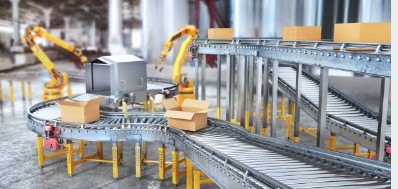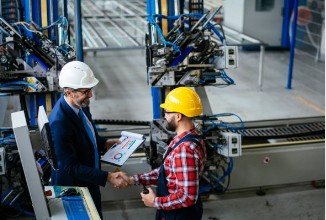Although manufacturers’ demands for speed and efficiency have increased due to the introduction of new technologies, the supply chain needs to be more cohesive. Warehouse operations that are efficiently managed are essential to the achievement of optimized processes and rapid turnaround times. The question now is: how can businesses achieve the results they need? Is state-of-the-art technology necessary to usher in a new era of unparalleled performance? The optimal positioning solution in warehouses can boost employee productivity by twenty percent. Manufacturing facilities have been implementing real-time location systems (RTLS) for some time now, and the importance of these systems is only expanding. The ability of RTLS to define and depict warehouse processes in easily digestible real-time data is one of not one, not two, but no less than three important ways RTLS is transforming the manufacturing industry.
Actions Taken by Both Machines and Humans

Which division is experiencing idle time? Where do you find that you are squandering your most valuable resources? Because of the rise of automation, machines are now performing an increasing proportion of previously human-handled tasks. Because of this transformation, there are now new prospects that are both intriguing and dangerous.
Identifying the most urgent activities and the quickest routes across the production would be one of the many ways machine operators may profit from an asset tracking system. At a manufacturing facility, reducing the risk of accidents and the amount of money spent on repairs can be accomplished by maintaining constant surveillance over the whereabouts of machines and personnel.
Accurate Monitoring
In addition, there are immediate ramifications for production that come with utilizing Bluetooth low energy (BLE) beacons for proximity tracking. Tracking assets as they are transported through production can benefit managers, particularly in less automated factories where commodities spend more time at each station. Two prime examples of this are industries that significantly emphasize artistry and a high level of customization. Even the most cutting-edge real-time location system (RTLS) may be implemented in smaller production units thanks to BLE’s low cost and ease of use. These production units are often smaller than a highly automated manufacturing line.
Most of today’s industrial solutions are typically implemented in a confined space, such as within a machine or on a manufacturing belt. Because of the enormous expense, it is not practical to establish tracking across an entire plant or warehouse using the now available solutions. Beacons are the only method that can be used practically for such purposes. The price that you pay is commensurate with the quality that you receive.
Circulation of the Manufacturing Process and Internal Logistics

Because beacons may be used for various purposes and are relatively inexpensive, real-time location tracking and locating systems (RTLS) can be utilized by businesses for purposes other than direct manufacturing. If supplies are not delivered to the production line on time, this could result in significant complications and even bring production to a complete halt. Businesses can assist their logistics personnel in prioritizing the delivery of the most useful or urgent requests by integrating RTLS for manufacturers into their existing logistics systems. With these data brought up to date, there is the potential for an increase throughout the supply chain.
What are some examples of RTLS’s use in factories?
Here you’ll find some of the most typical applications of RTLS systems in various industries, as their applications vary widely. Keep in mind that there are no limitations to RTLS systems. Following installation, the most visible applications of RTLS are not limited to the following.
Aeroscope industry
Current applications of RTLS in the aerospace industry include monitoring the whereabouts of toolkits, components, and workers during airplane assembly. Spending can be kept to a minimum in these complicated manufacturing processes by carefully managing a few high-priced instruments, worker safety, and production logistics. Several aircraft checks can be switched from a regularly scheduled model to an “as needed” model. Manufacturing RTLS systems’ capacity to monitor components and equipment and provide reports based on many data types (including visual, infrared, and vibration data) helps cut costs and improve efficiency throughout the manufacturing process.
Market for Automobiles
By monitoring the whereabouts of vehicles and wireless equipment, RTLS helps automakers shorten assembly lines. Tools can be adjusted based on their proximity to specific vehicles, and tool operations can be automated. Each vehicle on the assembly line may require a different set of tooling parameters due to the growing number of available customization options. With UWB tags replacing barcode scanners, factories may increase output and better meet deadlines. After being sold, the tagged vehicles may be followed while they are put into storage, and the tags can be saved for future use in maintenance and repair. Tesla currently maintains a digital counterpart of each vehicle to preserve vehicle history.
Yard Management
RTLS systems are well-suited for facilitating the coordinated and timely delivery of products in a manufacturing and logistics yard setting. Several logistical issues can be alleviated if transport trucks are always parked in the appropriate loading bays, and only the necessary stock, pallets, and containers are loaded or stored. Since the global epidemic, more factories have been stockpiling materials in preparation for any disruptions in their supply chains. This has increased logistics and storage management stress, although RTLS has made a big difference in this area.
In conclusion, RTLS Systems are very useful in manufacturing, and over time, various manufacturers have adopted them due to their convenience.

